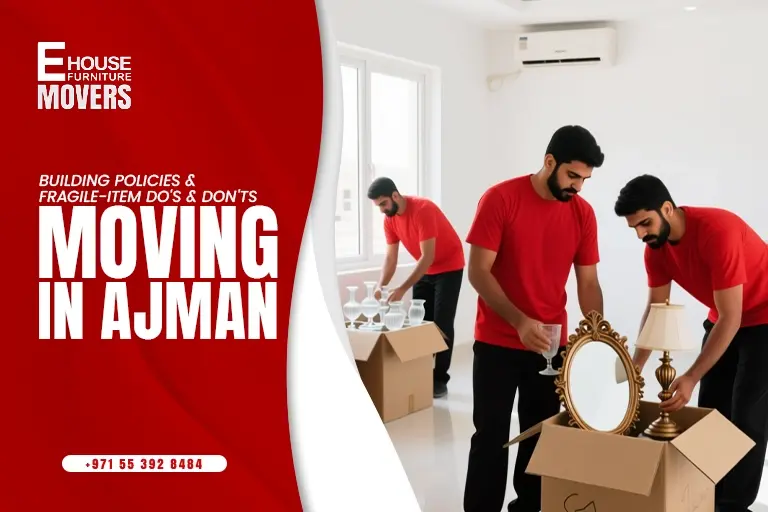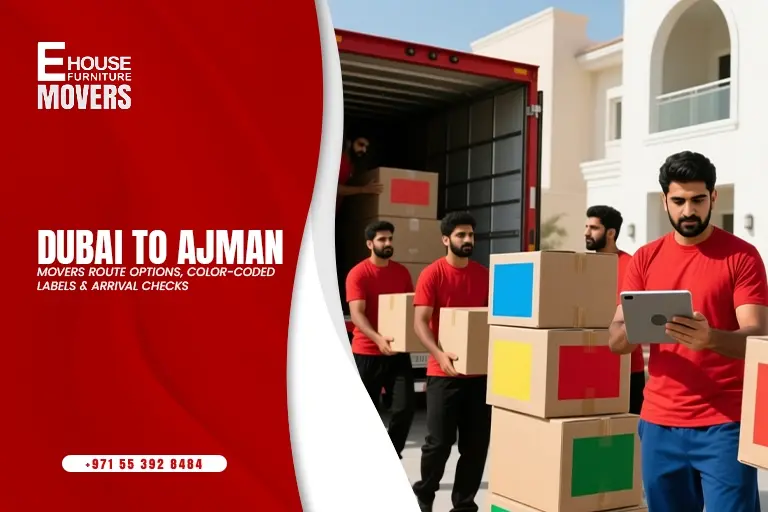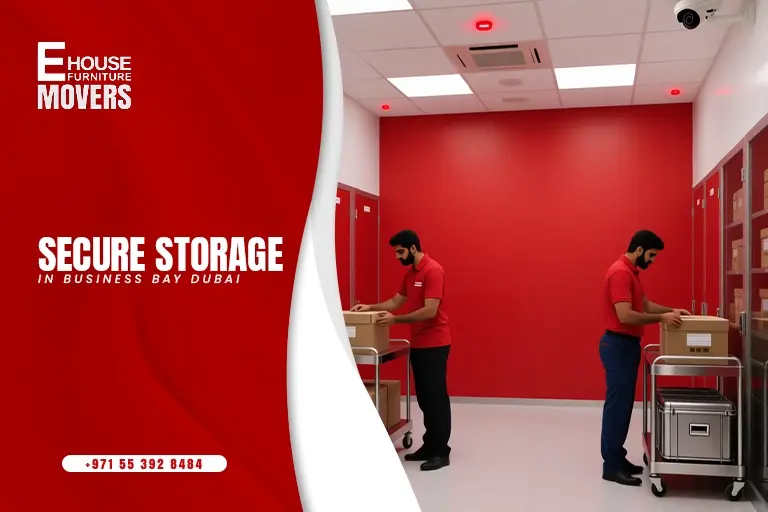Moving in Ajman is not just about putting your belongings into cartons and calling it a day—it comes with unique building regulations and the challenge of safely handling fragile items like glassware, ceramics, and electronics. Many tenants underestimate how important it is to understand building policies before moving day, only to face last-minute delays or even fines. At the same time, careless packing of delicate household goods often leads to unnecessary damage.
In this guide, we’ll dive deep into what residents need to know about Ajman’s building restrictions and provide practical fragile-item do’s and don’ts, complete with examples. This way, your move becomes less stressful and far more efficient.
Understanding Building Policies in Ajman
Every residential or commercial building in Ajman follows its own set of rules when it comes to moving in or out. These policies are in place to ensure smooth operations and to prevent inconvenience to other tenants. Let’s look at them in detail.
Move-In and Move-Out Permits
Most buildings require residents to submit an application for a move-in or move-out permit, sometimes referred to as an NOC (No Objection Certificate). This document confirms that your tenancy contract is valid and that the management approves your moving activity.
For example, in many Ajman towers, you won’t be allowed to book the service elevator unless the management has your NOC copy in hand. Without it, your movers might be stopped at the gate.
Elevator and Timing Restrictions
To minimize disruption, building management often restricts the use of elevators for moving. Heavy furniture and cartons are usually only allowed during non-peak hours—early mornings or late evenings.
Imagine moving your household on a Friday afternoon while everyone else is trying to get to work or prayer. The building may completely deny elevator access at that time. Understanding such restrictions avoids unnecessary rescheduling.
Parking and Loading Zones
Parking can be a nightmare in Ajman’s busy residential zones. Some buildings provide temporary loading zones for trucks, while others require advance booking for parking slots. Not checking this detail may force movers to park far away, increasing both time and effort.
Carton and Waste Disposal Rules
Some high-rise towers place restrictions on the number of cartons that can be carried in one trip or on how waste materials (like bubble wrap and tape) should be disposed of. Leaving empty cartons in hallways can result in fines from the management.
Why Policies and Fragile Items Go Hand-in-Hand
One area people often overlook is how building rules directly affect fragile items during relocation. For instance, if a building restricts elevator access to two hours, movers may feel pressured to rush. Rushed moves are the number one reason fragile items get mishandled.
Similarly, if cartons are limited per trip, you may be tempted to overpack boxes with both heavy and delicate items to save time. This shortcut often leads to breakage.
Example: A tenant in Al Rashidiya Tower once packed dishes and books in the same carton to meet carton restrictions. The result? Three shattered plates before reaching the truck.
This is why planning fragile-item packing with building policies in mind is critical. Always align your strategy with the time, carton, and elevator rules set by your building to reduce the risk of damage.
Fragile Item Do’s and Don’ts
Fragile items are always the biggest concern during a move. Dishes, mirrors, and electronics need extra care to survive the journey from one apartment to another. Below is a detailed breakdown of what you should and shouldn’t do.
Dos for Fragile Items
- Use Proper Cartons: Always pack breakables in double-walled cartons. For instance, glass plates should go into thick, medium-sized boxes instead of oversized cartons.
- Wrap Each Piece Individually: A common mistake is wrapping multiple cups or plates together. Instead, wrap each item separately with bubble wrap or soft cloth.
- Label the Boxes Clearly: Write “FRAGILE” in bold letters on every side of the carton. Movers can then prioritize careful handling.
- Add Cushioning: Fill empty spaces in the box with newspapers, foam, or towels. For example, when packing a vase, stuffing the inside with paper adds extra strength.
Don’ts for Fragile Items
- Don’t Overstuff Boxes: Overpacking increases pressure and makes cartons heavier than they should be. This is a recipe for cracks or chips.
- Don’t Leave Empty Gaps: Loose packing means items can shift around and collide inside the box.
- Don’t Stack Fragile Items Together: Never place a glass bowl directly over another one without separation. Use cardboard dividers or padding sheets between layers.
- Don’t Mix Fragile with Heavy: Avoid putting fragile glassware in the same box with books or metal utensils. The heavier items can crush lighter ones.
Preparing Glassware the Right Way
Glassware deserves extra attention because it’s both expensive and delicate. The best approach is to:
- Use partitioned cartons designed for glasses and cups.
- Wrap the stems of wine glasses separately since they’re the most breakable part.
- Place heavier glass items, like serving bowls, at the bottom and lighter glasses on top.
- Conduct a “shake test” before sealing the box. If you hear movement, add more filler until the box is snug.
Example: One Ajman family moving from Al Rashidiya to a new apartment found that half their wine glasses broke because they were packed in a large, half-empty carton. With proper dividers, this damage could have been avoided.
Also Read: How to Choose Reliable Movers in Ajman: An Informational Guide
Final Tips for a Smooth Move in Ajman
- Check with Building Management Early – Don’t wait until moving week to ask about rules. Contact them at least 10 days in advance.
- Separate Fragile Boxes – Keep all fragile cartons in one corner for quick identification.
- Prepare an Essentials Bag – Have toiletries, chargers, and snacks ready so you don’t have to dig through cartons after a tiring day.
- Communicate with Movers – If movers know which boxes need careful handling, they can plan their loading sequence better.
Conclusion
Moving in Ajman can be smooth and stress-free if you respect building policies and follow essential fragile-item do’s and don’ts. From securing permits and scheduling elevator usage to carefully packing your glassware, each step plays a role in reducing damage and delays.
Whether you’re relocating to a high-rise in Al Nuaimiya or shifting to a villa in Al Mowaihat, preparation is your strongest ally. Take time to understand your building’s restrictions, invest in the right cartons, and give fragile items the care they deserve.
With these steps, you’re not just moving—you’re moving smart.




